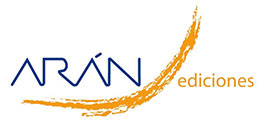Trabajo Original
The influence of the aesthetic body shape model on adolescents with eating disorders
Belén Barajas-iglesias, Ignacio Jáuregui-lobera, Isabel Laporta-herrero, Miguel Ángel Santed-germán
 Número de descargas:
6554
Número de descargas:
6554
 Número de visitas:
11634
Número de visitas:
11634
 Citas:
3
Citas:
3
Compártelo:
Introduction: the relevance of sociocultural factors with respect to etiology, development and treatment of eating disorders has been supported by many studies.Objectives: the aims of this study were: a) to analyze the different effects of the aesthetic body shape model on adolescents with anorexia nervosa (AN) vs bulimia nervosa (BN); b) to analyze possible differences, regarding that body shape model, between patients with purging behaviors vs non purging types of patients; and c) to explore the relationship between the influence of the aesthetic body shape model and other clinically relevant variables such as body dissatisfaction, eating attitudes and personality traits.Methods: the sample comprised 104 adolescents suffering from AN and BN. The Questionnaire of Influences on the Aesthetic Body Shape Model (CIMEC-40), the Body Shape Questionnaire (BSQ), the Eating Attitudes Test (EAT-40) and the Millon Adolescent Clinical Inventory (MACI) were applied.Results: the aesthetic body shape model of thinness influenced 77.9% of this sample, this influence being higher in the case of BN patients. In addition, that influence was stronger in the purging-type patients than in the non-purging type. Moreover, there was a significant and positive correlation among the influence of the aesthetic body shape model, body dissatisfaction and severity of eating symptoms. Finally, there seems to exist some personality traits more vulnerable to be affected by sociocultural factors.Conclusions: in view of these results, it is necessary that psychotherapeutic approaches take into account the influence of sociocultural factors and body dissatisfaction mainly in the case of adolescents with BN.
Palabras Clave:
Artículos más populares
Revisión: Inteligencia artificial generativa ChatGPT en nutrición clínica: avances y desafíos
ChatGPT y otras herramientas de inteligencia artif...
Revisión: Suplementación con micronutrientes y sus beneficios: ¿por qué y cuándo?
Introducción: los micronutrientes participan en la...
-
Licencia creative commons: Open Access bajo la licencia Creative Commons 4.0 CC BY-NC-SA
https://creativecommons.org/licenses/by-nc-sa/4.0/legalcode




